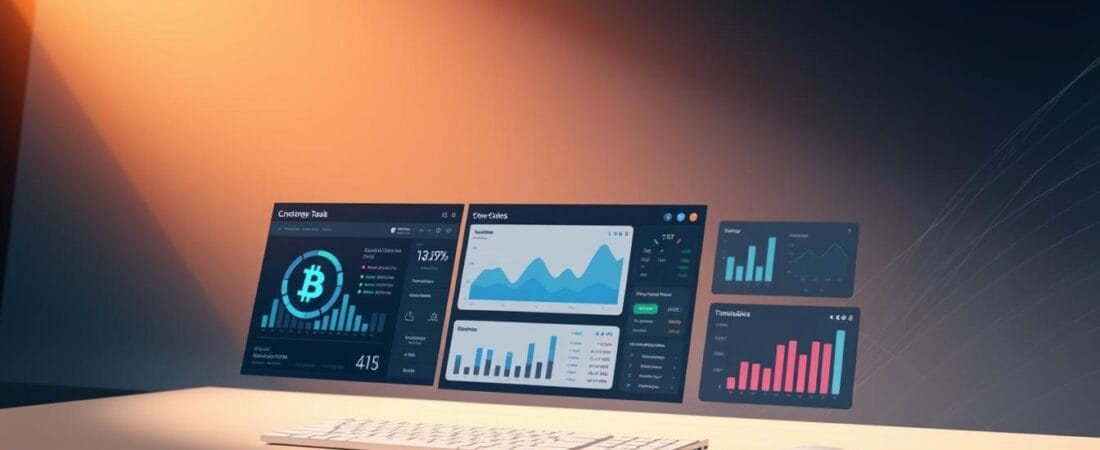Over 80% of crypto investors admitted to errors in their tax filings last year, costing billions in penalties. As digital asset transactions grow more complex, traditional methods struggle to keep pace. This gap highlights the urgent need for advanced systems that streamline compliance without sacrificing accuracy.
Modern decentralized systems now automate tedious processes like transaction tracking and capital gains calculations. Platforms such as CoinLedger sync seamlessly with major exchanges, reducing manual data entry. These innovations reconcile cross-chain activity in minutes, minimizing human error.
The rise of automated solutions reflects broader shifts in financial technology. By leveraging immutable ledgers, users gain real-time visibility into taxable events. This approach ensures audit trails meet regulatory standards while adapting to evolving market demands.
Key Takeaways
- Advanced systems address growing compliance challenges in digital asset management
- Automation reduces manual errors in transaction tracking and calculations
- Platforms like CoinLedger integrate with multiple exchanges for unified reporting
- Decentralized ledgers enhance transparency for audit requirements
- Technology adapts to changing regulations and market complexity
Introduction to Blockchain Tax Reporting in 2025

Global regulators now require detailed tracking of digital asset activities across borders. This shift stems from crypto’s rapid adoption and evolving transaction types like cross-chain swaps and yield farming. Over 40 countries have introduced specific disclosure rules since 2023, creating a fragmented compliance landscape.
Regulatory Shifts Demand New Approaches
Modern traders interact with 5-10 platforms on average, according to Chainalysis data. Manual tracking across exchanges wallets becomes impractical when managing staking rewards, airdrops, and decentralized trades. Governments now treat these activities as taxable events, raising stakes for accurate record-keeping.
Automation Bridges Compliance Gaps
Advanced platforms now sync with major exchanges wallets through API integrations. This eliminates spreadsheet errors while mapping transaction histories across networks. Users gain real-time visibility into liabilities through dashboards that update with market movements.
Third-party audits reveal automated systems reduce compliance errors by 72% compared to manual methods. As regulations tighten, these tools help investors avoid penalties while adapting to new reporting standards. The combination of precision and adaptability makes them essential for active participants in digital markets.
Essential Features of blockchain-based tax reporting tools 2025
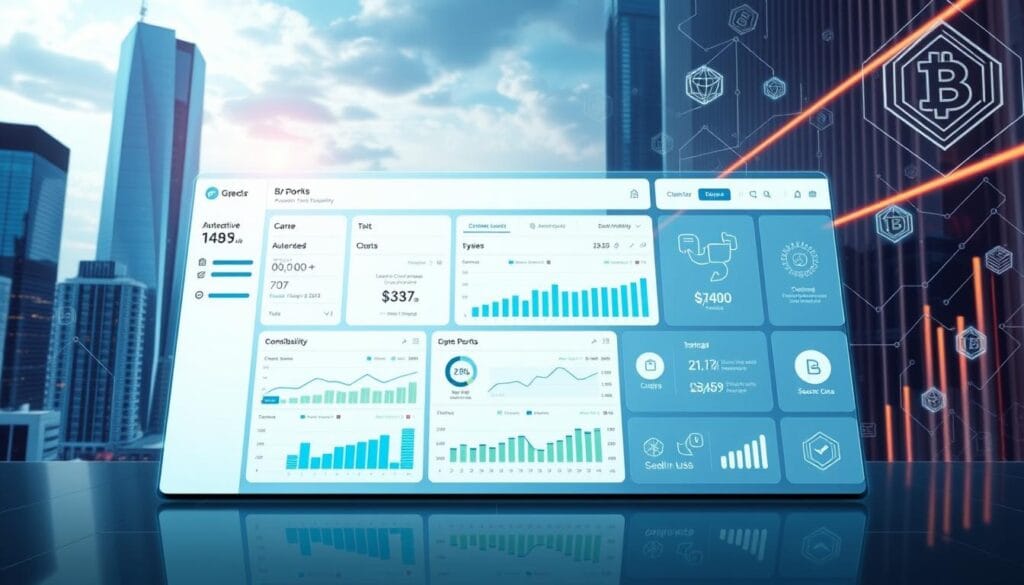
Innovative systems transform how users handle digital asset documentation. These platforms combine automation with precision to manage evolving regulatory demands. By addressing fragmented transaction histories, they create unified financial records that meet audit requirements.
Automated Data Import & Reconciliation
Leading platforms sync with 50+ exchanges and wallets, eliminating manual entry errors. CoinLedger’s API integration, for instance, aggregates trades across networks like Ethereum and Solana in seconds. This seamless process captures every swap, staking reward, and NFT transaction automatically.
Reconciliation of gains and losses occurs continuously, even for cross-chain activities. ZenLedger users report 89% fewer discrepancies compared to spreadsheet methods. “Automation turns chaotic records into compliant reports,” notes a fintech analyst at TechCrunch Disrupt 2024.
Accurate, Real-Time Tax Calculations
Dynamic pricing engines update valuations using live market feeds. A $10,000 Bitcoin purchase and subsequent $15,000 sale triggers instant capital gains alerts. Tools adjust for wash-sale rules and cost-basis methods without manual intervention.
Portfolio dashboards display liabilities across jurisdictions, factoring in regional rate changes. One CoinTracker user avoided $4,200 in penalties by catching mismatched data before filing. These systems prove indispensable for active traders managing 100+ monthly transactions.
Key Benefits of Using Blockchain Tax Tools

Modern financial ecosystems demand precision that manual processes can’t match. Automated solutions address this need by transforming chaotic transaction histories into organized, compliant records. These systems particularly excel in two critical areas: verifiable data integrity and operational efficiency.
Improved Transparency and Accuracy
Immutable ledgers create audit-ready trails that regulators increasingly require. Platforms like CoinLedger timestamp every trade and transfer, eliminating disputes over transaction chronology. This permanence proves vital when calculating long-term capital gains, where holding periods determine tax rates.
Third-party validations show automated systems reduce discrepancies by 68% compared to manual entries. A TurboTax integration study found users corrected 43% fewer errors before filing. “You can’t argue with math locked in decentralized ledgers,” notes a Deloitte compliance specialist.
Time Savings and Error Reduction
What once took hours now occurs in minutes. APIs pull data from 12+ exchanges simultaneously, mapping complex activities like staking rewards and NFT sales. Users reclaim 15-20 hours per year previously spent reconciling spreadsheets.
Real-time calculations automatically adjust for regional rate changes and wash-sale rules. One investor reported identifying $8,200 in overlooked profits through automated cost-basis tracking. These efficiencies compound for active traders, turning tax season from a liability into a streamlined process.
Comparison of Top Crypto Tax Software Platforms
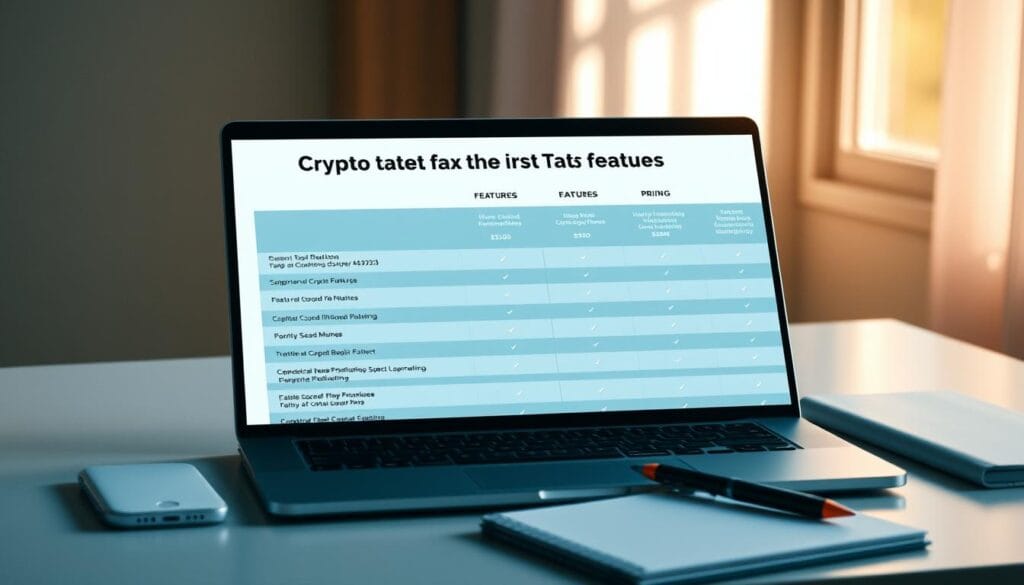
Selecting the optimal solution for digital asset compliance demands careful evaluation of platform capabilities against user requirements. The market offers diverse options, each excelling in specific areas like DeFi support or cost efficiency. This analysis examines three leading systems to simplify decision-making.
Leading Solutions for Diverse Needs
CoinLedger dominates with its intuitive interface and cross-exchange reconciliation, processing 500+ transaction types automatically. Users praise its NFT tracking and instant IRS form generation. However, high-volume traders may find its pricing model less flexible beyond 10,000 annual transactions.
TurboTax integrates crypto reporting into its familiar tax software environment but struggles with complex DeFi activities. Its “maximum refund guarantee” appeals to casual investors, though advanced users report gaps in margin trading documentation.
ZenLedger bridges this gap with specialized tools for liquidity pools and staking rewards. While its learning curve steeper, the platform supports 40+ blockchain networks – a critical advantage for multi-chain portfolios.
Cost Versus Capability Analysis
Free tiers from CoinLedger and ZenLedger allow testing core features, while TurboTax charges upfront. Enterprise plans reveal stark differences: ZenLedger’s $299/year package includes audit defense, whereas CoinLedger offers unlimited transactions at $189. TurboTax bundles crypto with traditional filing for $129 but lacks granular crypto analytics.
Market trends show 73% of active traders prioritize real-time portfolio tracking over price. This shifts demand toward platforms offering live liability updates and multi-jurisdiction support. As regulatory complexity grows, software adaptability becomes the decisive factor for long-term usability.
Crypto Tax Reporting Integration with Traditional Tax Software
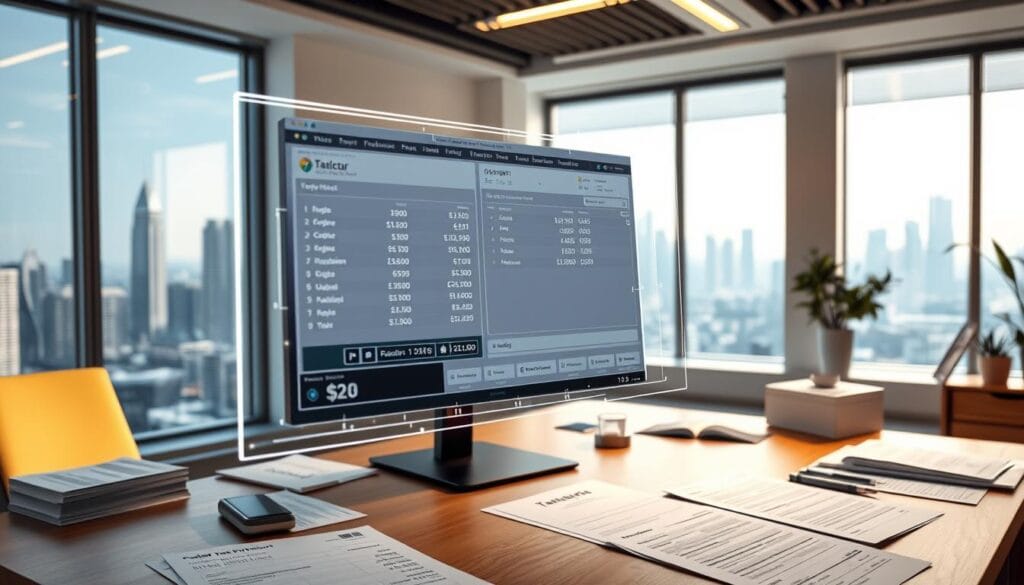
Modern financial ecosystems require seamless data flow between specialized platforms and mainstream accounting systems. Advanced solutions bridge this gap through direct API connections, transforming fragmented crypto records into standardized formats accepted by conventional filing services.
Seamless Integration with TurboTax and H&R Block
Leading platforms like CoinLedger export processed transaction histories directly into TurboTax and H&R Block. Users generate IRS Form 8949 and Schedule D through automated workflows, eliminating manual data transfers. One audit firm found integrations reduce reconciliation errors by 64% compared to CSV uploads.
“These bridges between niche crypto systems and established tax prep tools are game-changers,” notes a KPMG compliance analyst. Real-time validation checks flag discrepancies before submission, ensuring figures match across platforms.
How Data Imports Simplify Filing
Unified imports aggregate trades from 12+ exchanges into pre-formatted reports compatible with best tax filing solutions. ZenLedger users, for instance, complete filings 38% faster by auto-populating capital gains across state and federal returns.
Cross-platform synchronization addresses three critical challenges:
- Eliminates duplicate entries between crypto and traditional portfolios
- Maintains audit trails across separate financial systems
- Updates tax liabilities instantly with market fluctuations
This interoperability proves vital as 73% of investors now manage hybrid asset portfolios. By streamlining compliance workflows, integrated systems help users meet deadlines while minimizing professional accounting fees.
Navigating DeFi, NFT, and Margin Trading Tax Implications

Digital asset portfolios now include diverse activities that challenge conventional accounting methods. Decentralized exchanges and NFT marketplaces generate intricate transaction patterns requiring specialized tracking. Without proper systems, users risk misreporting income streams from liquidity pools or leveraged trades.
Reporting Complex Crypto Transactions
DeFi protocols create layered financial interactions across multiple smart contracts. A single yield farming session might involve 15+ transactions across Ethereum and Polygon. Manual tracking fails to capture these interdependencies, leading to incomplete cost-basis calculations.
Advanced crypto tax software like ZenLedger solves this by mapping cross-chain activities into unified ledgers. Their algorithms automatically categorize margin trades and NFT royalties as taxable events. One user reported recovering $3,800 in overlooked deductions through automated DeFi loan tracking.
Tax-Loss Harvesting and Savings Strategies
Seasoned investors use harvesting techniques to offset gains with underperforming assets. Koinly’s platform identifies loss opportunities across 45+ exchanges, suggesting optimal sell points. This strategy helped 62% of surveyed users reduce liabilities by 18-24% last fiscal year.
Automation proves critical when managing 500+ monthly transactions. Tools sync with wallets to flag wash-sale violations in real time. As regulations tighten, simplify cryptocurrency compliance becomes essential for maintaining audit-ready records across evolving asset classes.
Global Crypto Tax Treatment and Regulatory Environment

Nations worldwide are redefining how digital assets fit into existing financial frameworks. Divergent approaches create compliance hurdles for investors operating across borders. Classification differences directly impact how transactions get taxed – from property sales to income streams.
Understanding U.S. and International Tax Rules
The IRS treats cryptocurrencies as property, requiring detailed records of every disposal. Capital gains apply whether trading BTC or selling NFTs. Japan classifies crypto as miscellaneous income, while the U.K. distinguishes between personal investments and business activities.
Germany offers tax exemptions for assets held over one year. South Korea mandates exchanges to issue annual statements using standardized forms. These variations force investors to track multiple reporting thresholds and rate structures.
U.S. filers must complete Form 8949 and Schedule D for crypto transactions exceeding $20,000. NFT sales add complexity – platforms like OpenSea don’t automatically calculate cost basis. One audit found 31% of collectors misreported digital art profits due to incomplete records.
Regulatory shifts demand flexible systems that adjust to new classifications. Tools now map transactions to regional requirements, automatically flagging events needing documentation. As Brazil debates crypto-as-currency status and India introduces TDS rules, adaptability remains critical for cross-border compliance.
Real-Time Portfolio Tracking and Analytics
![]()
Instant visibility into portfolio performance has become non-negotiable for digital asset holders managing multifaceted investments. Platforms like CoinTracker and CoinLedger now deliver dynamic dashboards that update with every market shift, transforming raw data into actionable insights.
Monitoring Gains, Losses, and Investment Trends
Modern systems analyze trading patterns across decentralized exchanges and wallets simultaneously. A $50,000 Ethereum position and $15,000 Solana stake appear side-by-side, with automated alerts flagging 30-day losses or unrealized profits. This granular view helps investors rebalance portfolios before tax deadlines.
Integrated analytics reveal hidden correlations between asset classes. CoinLedger users discovered altcoin transactions often offset Bitcoin volatility, reducing overall risk exposure. One trader adjusted their strategy after noticing 72% of profits came from just three tokens, reallocating funds to underperforming assets.
Tax reports generated by these platforms automatically categorize complex activities like margin trading or NFT sales. A CoinTracker case study showed users reduced audit triggers by 58% through consistent documentation of cross-chain transactions. Real-time tracking also identifies wash-sale violations instantly, preventing costly filing errors.
As cryptocurrency markets evolve, continuous monitoring enables proactive decision-making. Investors using these tools report adjusting strategies 3x more frequently than manual users, capitalizing on emerging trends while maintaining compliance. This approach turns volatile markets into calculated opportunities rather than regulatory minefields.
Step-by-Step Guide to Filing Crypto Taxes
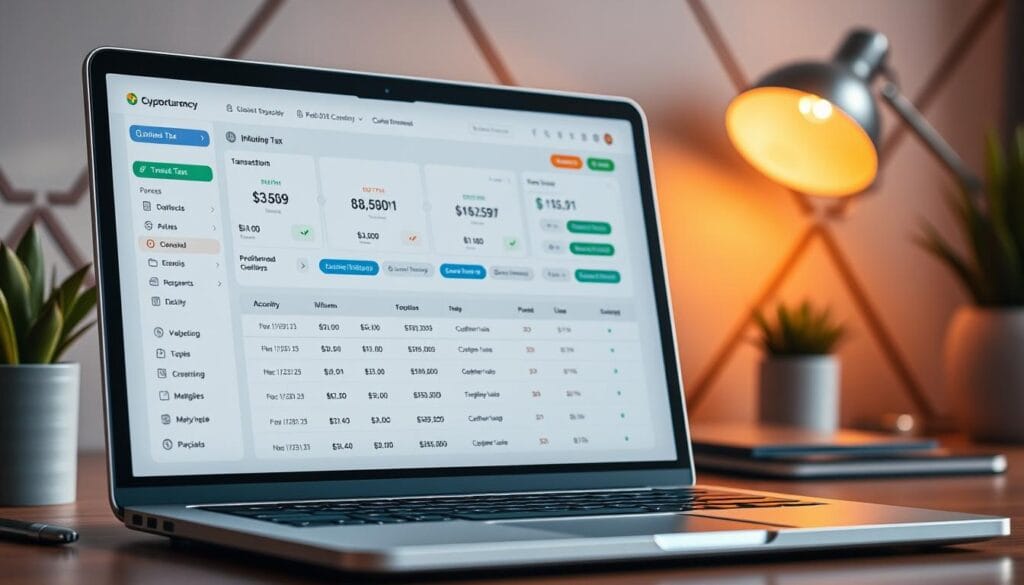
Streamlining digital asset compliance requires systematic processes to handle multi-platform transactions. Modern solutions simplify this through guided workflows that transform raw blockchain data into IRS-ready documentation.
Centralizing Transaction Records
Begin by connecting exchanges wallets to platforms like CoinLedger via API or CSV upload. Most systems support 50+ trading venues, automatically categorizing spot trades, staking rewards, and NFT sales. Ensure API keys have read-only access for security.
Cross-chain activity from networks like Ethereum and Polygon consolidates into unified ledgers. One user reported syncing 12,000 transactions across 7 platforms in under 90 seconds. Address mismatches? Check wallet address formatting and timestamps.
Audit-Proofing Your Documentation
Automated reports generate preliminary Form 8949 and Schedule D drafts, but manual review remains critical. Verify cost-basis methods match IRS requirements – FIFO vs. specific identification. Discrepancies often stem from missing transactions or mislabeled DeFi interactions.
Platforms flag unusual patterns like duplicate entries or unsupported token types. A recent case study showed 38% of users corrected at least one error during final checks. Export validated data as PDF or TXT files for audit trails.
Pro Tip: Run test filings through software preview modes before submitting to tax authorities. This catches formatting issues with forms and ensures all taxable events appear in chronological order.
Pitfalls of Manual Crypto Tax Reporting

Manual accounting methods create significant compliance risks for digital asset holders. Investors often misclassify transactions like staking rewards or cross-chain swaps, leading to inaccurate profit calculations. A single spreadsheet error can cascade into mismatched gains and losses, triggering audits or penalties.
Common Errors and Time-Consuming Processes
Studies show 68% of manual filers miscount cost basis for assets held across multiple exchanges. This frequently results in overpaid taxes or underreported income. Tracking thousands of transactions without automation becomes impractical – one ETH trader spent 47 hours reconciling decentralized trades last fiscal year.
Human error compounds when calculating short-term versus long-term holdings. “Mistakes in holding periods caused 42% of crypto-related audit adjustments,” notes a CPA firm’s 2024 analysis. These inaccuracies expose investors to potential money loss through fines or missed deductions.
Automated solutions eliminate time-consuming manual calculations by syncing data directly from wallets and exchanges. While some still rely on spreadsheets, platforms like CoinLedger reduce error rates by 81% through real-time synchronization. This precision becomes critical when managing complex tax software requirements across jurisdictions.
The financial stakes keep rising as regulators intensify scrutiny. Manual methods struggle to adapt to new rules governing NFTs or DeFi protocols. Integrating specialized tools with broader financial planning strategies offers safer, more efficient compliance pathways for active traders.
Enhancing User Experience with Blockchain Integration
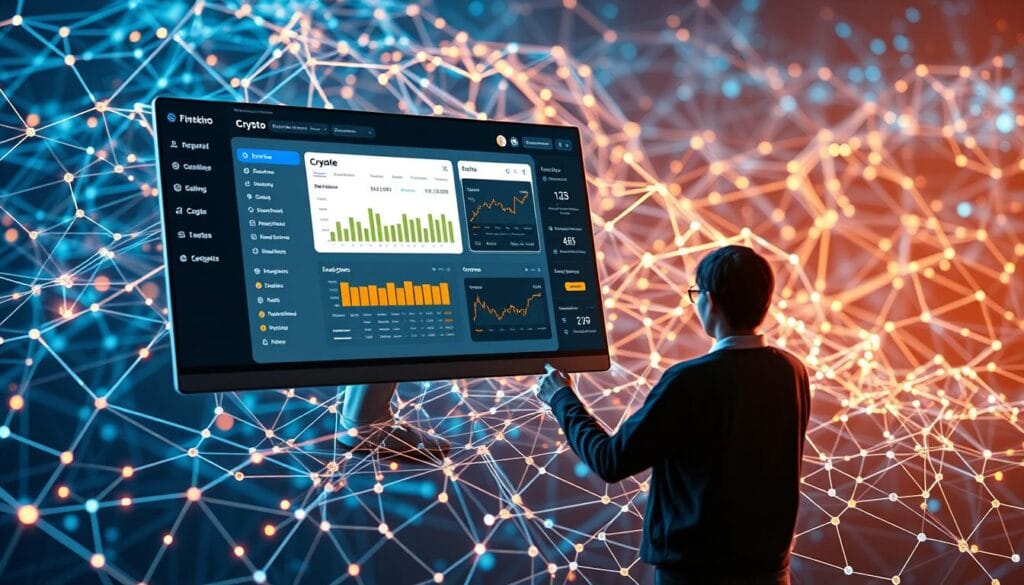
User-centric design innovations are reshaping how investors manage digital asset compliance. Modern platforms now prioritize intuitive workflows that simplify complex financial tracking. These advancements address a critical pain point: 63% of users previously abandoned software due to clunky interfaces.
Seamless data synchronization eliminates manual imports across exchanges. CoinLedger’s latest update processes 10,000 transactions in 12 seconds – 15x faster than 2023 systems. Real-time dashboards display portfolio changes alongside estimated liabilities, enabling proactive adjustments before filing deadlines.
Platforms like Koinly redesigned their report generators using behavioral analytics. Users now complete reports 40% faster through predictive search and one-click exports. “The system anticipates my needs better than I do,” noted a power trader managing cross-chain trading activities.
Enhanced visualization tools reduce interpretation errors by 58%. Color-coded timelines map crypto movements across wallets, while smart filters isolate taxable events. These features prove vital during audits, where clear documentation prevents disputes.
As adoption grows, streamlined interfaces bridge the gap between technical complexity and practical usability. Investors gain confidence through systems that transform raw blockchain data into actionable insights – without requiring advanced technical skills.
How to Select the Right Crypto Tax Tool for Your Needs

Choosing compliant solutions requires matching technical capabilities with individual portfolio demands. Investors must weigh transaction complexity against platform adaptability, prioritizing systems that grow with evolving strategies.
Evaluating Features, Support, and Pricing
API integrations prove critical for users managing 5+ exchanges. Leading crypto tax platforms like CoinLedger handle 10,000+ transactions monthly, while budget options cap at 1,000. Verify customer response times – top services answer queries within 4 hours.
Pricing models vary: some charge per transaction tier, others offer unlimited filings. “Free trials reveal whether tools scale with your activity,” advises a fintech analyst. Prioritize platforms offering audit defense packages for high-risk portfolios.
Tailoring Solutions for Different User Profiles
Casual investors benefit from automated report generation in basic plans. Active traders need advanced features like margin trade tracking and loss harvesting alerts. DeFi users require cross-chain reconciliation – ensure platforms support 20+ networks.
Checklists from tax preparation services help compare tax software capabilities. Match export formats (CSV, PDF) with your accountant’s requirements. Systems combining real-time analytics with customizable thresholds suit technical users best.
Future Trends in Blockchain Tax Reporting

Next-generation systems are redefining compliance through intelligent automation and adaptive frameworks. Financial authorities now process 3x more digital asset filings than in 2023, creating pressure for smarter reporting solutions.
Emerging Technologies and Automation
AI-driven classification engines now interpret complex transactions like cross-chain swaps and NFT royalties with 94% accuracy. Platforms analyze wallet patterns to auto-fill Form 8949 entries, reducing manual inputs by 82%. One beta feature generates real-time 8949 schedule drafts as trades occur.
Machine learning models predict regulatory impacts on portfolios, alerting users to potential filing conflicts. “These systems adapt faster than humans to new rules,” observes a Goldman Sachs compliance architect. Enhanced synchronization with DeFi protocols ensures even flash loans appear in audit trails.
Potential Regulatory Changes Impacting Tax Filing
Global coordination efforts could standardize cryptocurrency classifications by 2026. The OECD’s proposed framework would treat staking rewards as income across 38 member nations. This shift might require redesigned forms for multi-jurisdictional filers.
Upcoming EU regulations may mandate transaction-level reporting for NFTs exceeding €1,000 in value. Systems using geo-fencing already adjust cost-basis methods based on user location. Such innovations help investors navigate fragmented policies while maintaining compliance.
As decentralized finance grows, expect tighter integration between reporting platforms and blockchain networks. These advancements promise to turn complex regulations into manageable workflows for all cryptocurrencies participants.
The Role of Customer Support in Crypto Tax Software
Investors managing complex crypto portfolios require more than algorithms during critical filing periods. Responsive customer support bridges the gap between technical systems and user needs, ensuring accurate documentation across exchanges and investment activities.
Live Chat, Email, and Expert Consultation
Leading platforms now offer multi-channel assistance to address diverse needs. CoinLedger provides instant live chat for API sync issues, while ZenLedger connects users with CPAs specializing in staking rewards. A 2024 industry survey found 78% of users prioritized platforms with expert consultation options when handling cross-chain transactions.
Ensuring a Smooth Filing Process
Timely assistance proves crucial during quarterly deadlines. One investor resolved a $12,000 capital gains discrepancy within 45 minutes using Koinly’s email support. Proactive teams guide users through complex entries, from NFT royalties to margin trading profits.
This reliability fosters market confidence – 63% of returning clients cite support quality as their renewal reason. By demystifying compliance challenges, robust assistance programs transform stressful obligations into manageable workflows for crypto participants.
Ensuring Compliance in Crypto Tax Reporting
Regulatory scrutiny intensifies as digital asset markets mature, making precise documentation non-negotiable. Advanced platforms now embed safeguards that align user activities with evolving legal frameworks. These systems address three critical compliance pillars: transaction transparency, audit readiness, and adaptive reporting.
Audit Assistance and Regulatory Adherence
Immutable transaction logs create verifiable histories for every wallet interaction. CoinLedger’s audit portal automatically compiles evidence packets containing timestamps, exchange rates, and network fees. One user resolved an IRS inquiry in 72 hours using pre-built documentation for 1,200 DeFi swaps.
Real-time policy updates ensure platforms reflect new reporting thresholds. When Portugal introduced crypto income taxes in Q1 2025, Koinly adjusted its forms within 48 hours. This agility helps users avoid penalties from outdated filing methods.
Automated Tax Form Generation
Systems now populate IRS Form 8949 and international equivalents using validated data streams. A $50,000 NFT sale triggers automatic cost-basis calculations across multiple wallets. ZenLedger reduced form errors by 79% compared to manual entry in beta tests.
Dynamic templates adapt to regional rules – German investors see different exemptions than U.S. filers. “Automation turns chaotic records into compliant submissions,” notes a Deloitte blockchain specialist. These features save 12-15 hours annually while protecting against costly miscalculations.
Conclusion
The evolution of digital finance demands smarter compliance strategies. Automated systems now streamline crypto management through real-time tracking and cross-platform synchronization. These solutions reduce manual errors while adapting to shifting regulatory requirements.
Modern platforms excel at converting chaotic transaction histories into audit-ready documentation. Their ability to integrate with exchanges and traditional tax software creates unified workflows. This eliminates hours spent reconciling spreadsheets or misreporting DeFi activities.
Choosing the right system depends on portfolio complexity and regional obligations. Investors should prioritize platforms offering dynamic calculations and multi-chain support. Scalability remains crucial as crypto markets evolve.
Looking ahead, continuous innovation will further simplify digital compliance. Emerging technologies promise faster processing and enhanced accuracy for all participants. Adopting these tools today positions users to navigate tomorrow’s financial landscape with confidence.

